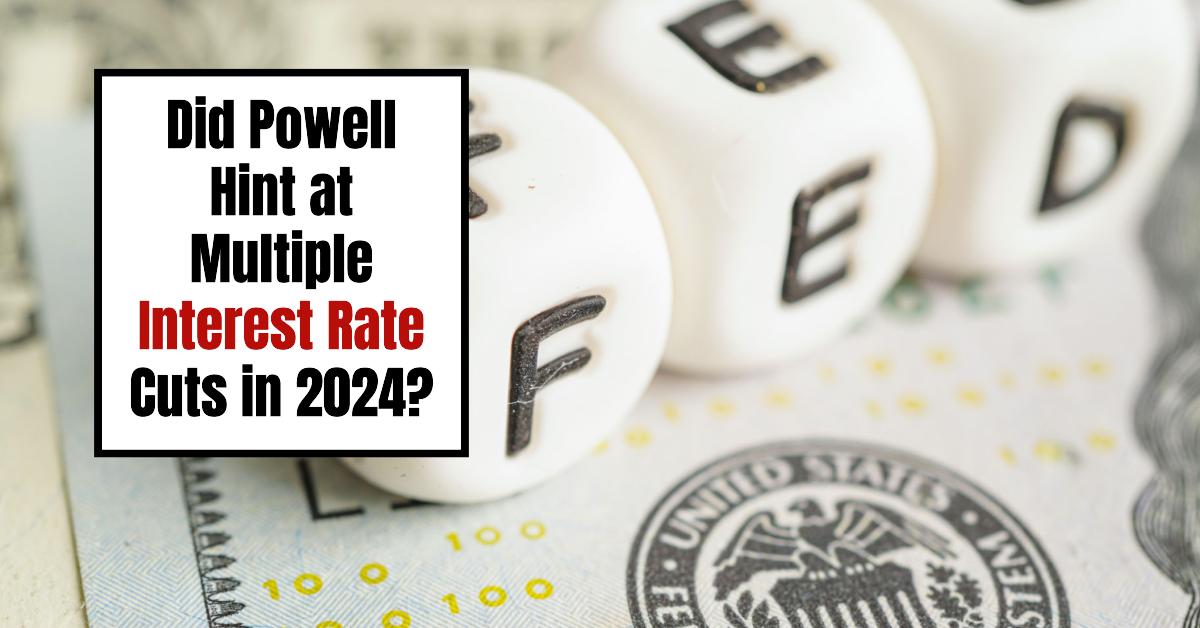As economic conditions fluctuate, interest rate predictions are becoming increasingly significant for investors and policymakers alike. Recent discussions surrounding interest rate cuts by the Federal Reserve highlight a critical response to economic indicators, particularly in light of recent inflation trends and employment risks. Federal Reserve Chair Jerome Powell has recently signaled a potential shift in monetary policy, suggesting that the time may be ripe for rates to decrease if the economic data corroborates such a move.
Multiple Interest Rate Cuts Predicted If Economic Data Warrants It
Key Takeaways
- Powell's Indications: Strong indications from Jerome Powell suggest that rate cuts could happen as soon as September.
- Economic Data Dependency: Any adjustments in interest rates hinge heavily on upcoming economic data and trends.
- Inflation Outlook: A significant reduction in inflation risks bolsters the case for lower interest rates.
- Consensus Among Economists: A majority of economists and analysts anticipate rate cuts will occur if economic conditions align accordingly.
The annual economic conference held by the Kansas City Fed at Jackson Hole has garnered much attention this year, primarily due to Powell's remarks surrounding monetary policy adjustments. Speaking at the symposium, Powell articulated that both upside risks to inflation have diminished and that downside risks to employment have increased. He emphasized that “the time has come for policy to adjust,” illustrating the significant nexus between economic indicators and interest rate predictions.
The Current Federal Reserve Stance
At its policy meeting on July 30-31, the Federal Reserve decided to maintain interest rates in the range of 5.25% to 5.50%. However, minutes from this meeting revealed that a robust majority of the committee members supported potential rate cuts in the near future, citing notable progress on inflation. Analysts from various institutions, including Evercore ISI, foresee that if US economic data supports the notion, Powell might propose multiple rate cuts in the upcoming months (World Economic Forum).
This consensus among Fed officials reflects a marked change in intervention strategy aimed at stabilizing the economy while mitigating adverse effects on employment. Powell's hints of an easing policy have instilled optimism amidst concerns that premature cuts might unintentionally reignite inflation. As highlighted by current discussions, many economists are looking closely at the data to determine the readiness for a shift in policy.
Analyzing Inflation Trends and Employment Data
The Federal Reserve's decisions concerning interest rates are inherently tied to inflation metrics. Recent developments suggest a significant decline in inflation pressures, a primary factor influencing the Fed's potential policy adjustment. In light of these changes, Powell underscored the imperative for data scrutiny moving forward.
As inflation has moderated, there is clear momentum behind the movement toward rate cuts, especially when juxtaposed with the uptick in employment risks. For instance, forecasts and analyses predict a systematic decline in inflation rates in the latter half of 2024. According to CNBC, traders expect a high probability of a rate cut in September with inflation data showing signs of improvement (CNBC).
Meanwhile, employment risks appear to be on the rise, emphasizing the Federal Reserve’s dual mandate to foster stable inflation while ensuring maximum employment. The delicate balance between these factors will be crucial in determining forward-looking interest rate predictions.
Forward Guidance and Market Reactions
Market reactions to Powell's statements at Jackson Hole were immediate, indicating a prevailing sentiment regarding possible interest rate cuts. Investors frequently view the Fed's autonomy as a leading indicator of economic health. Consequently, predictions of multiple cuts this year, as indicated by various market analysts, have led to adjustments across sectors responsive to changes in borrowing costs.
Reports indicate a bullish outlook on corporate investments should the Fed lower rates, which would subsequently reduce borrowing expenses for businesses. This aligns with reactions seen in financial markets following Powell's recent statements. Additionally, economic analysts argue that the rate adjustments could potentially lead to a revitalization in sectors hit by higher borrowing costs, particularly in real estate and consumer finance.
Impact on Real Estate and Consumer Borrowing
Current interest rate predictions suggest a profound impact on the real estate market and consumer borrowing scenarios. As reported by Forbes, expectations of a rate cut are contributing to declines in mortgage rates, making housing more accessible. A favorable borrowing climate often leads to a boost in home purchases and refinances, directly influenced by the Federal Reserve's policy moves.
Moreover, lower interest rates can stimulate consumer spending, a critical driver of economic growth. Cheaper loans allow consumers to manage personal finances better while fostering confidence in broader economic health. If the Fed successfully executes anticipated cuts, the consumer market may experience additional momentum heading towards the end of the year.
In summary, the evolving narrative surrounding interest rates and economic metrics underscores the importance of ongoing vigilance regarding data analysis. While the Fed's next steps remain contingent upon future reports, the changing landscape offers essential insights into potential monetary policy shifts.
ALSO READ:
- How Low Will Interest Rates Go in 2024?
- Goldman Sachs' 5-Year Housing Forecast from 2024 to 2027
- US Home Price Forecast by Goldman Sachs Shows 5% Surge in 2024
- Interest Rate Predictions for the Next 3 Years: (2024-2026)
- Interest Rate Predictions for Next 2 Years: Expert Forecast
- Interest Rate Predictions for Next 10 Years: Long-Term Outlook
- When is the Next Fed Meeting on Interest Rates in 2024?
- Interest Rate Cuts: Citi vs. JP Morgan – Who is Right on Predictions?
- More Predictions Point Towards Higher for Longer Interest Rates




